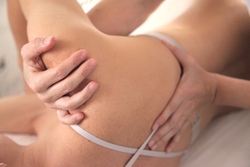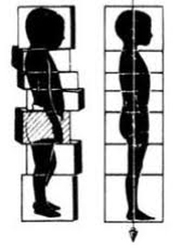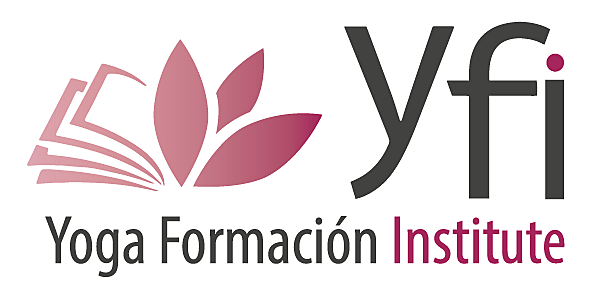The Rolfing® Method
How can The Rolfing® method help you? - It's benefits
The Rolfing® method provides a freer, more harmonious body movement with greater amplitude and movement awareness, allowing you to maintain an upright posture with less effort.
Throughout the sessions, each person will notice progressive changes in their physical, mental and emotional state as our body reflects the history and experiences of our life.
Breathing becomes more extensive, efficient and with fewer restrictions.
Be aware of our postural habits.
Expand body perception.
Identify bodily attitudes, adopt new ones and discover their meaning.
Other Benefits:
- Helps to solve many annoyances both in the day to day and in the practice of sports activities.
- Seeks to eliminate causes that may lead to pain and / or restricted mobility as a result of poor body posture.
- Facilitates a better alignment of the body with respect to gravity.
- Improves coordination, perception, awareness and body expression.
- Promotes breathing and circulation.
- Releases restrictive tension patterns.
- Improves blood and lymphatic circulation.
- Decrease stress levels.
- Allows you to assimilate new movement habits.
- Improvement: chronic pains, lumbago, sleep disturbances, scoliosis, anxiety, joint pains, muscle tension, cervical problems, foot pathologies.
How does Rolfing® work?
The Rolfing allows, through the deep manipulations that are exerted on the fascial tissue, an optimization and reeducation of the corporal movement, as well as a natural balance of the body taking always into account the influence exerted by the gravity on us in the day to day.
The pressures that are exerted on the fascial tissue generate heat and activate the sensory receptors, which softens the tissue, making it more malleable and favouring its organisation, performance and functioning.

La Fascia - Connective tissue - How does it work
The fascia is a three-dimensional structure formed by fibrous and at the same time adaptable connective tissue that envelops, supports, protects, compartments and connects the entire body. It allows the sliding and the correct functioning between the different corporal structures. When it loses some of its characteristics it can produce some imbalance or restriction in the body that can be reflected as ailments or dysfunctions. Its continuous nature means that the loss of elasticity or mobility in a certain site may be reflected elsewhere distant from it. That is why during the sessions of Rolfing the body is worked globally.
What is the Rolfing® Method?
Rolfing® - Structural Integration - is a technique of deep manipulation of the connective tissue (fascia) that works with posture, balance, coordination, movement, flexibility and perception.
Rolfing® - Structural Integration - is a technique of deep manipulation of the connective tissue (fascia) that seeks a better alignment of the body in relation to the force of gravity and the education of the movement. It systematically helps the body to obtain a structure and natural posture in such a way that it is in balance with gravity, providing great lightness. When working with the whole body, we take into account both respiratory rhythms and movement and body expression.
Who was Dr. Ida Rolf?
Dr. Ida Rolf developed a method that coined the term "Structural Integration", but years later, her own name would become synonymous with the method. It is currently known as Rolfing® - Structural Integration.
Dr. Ida Rolf developed a method becoming one of the leading pioneers in the field of connective tissue manipulation and study of body movement. His exhaustive research on how a body structure organized by gravity has a positive effect on the whole body has inspired and enriched the body's work field for generations around the world.
Motivated to find solutions for problems and health conditions, Dr. Ida Rolf investigated other alternative methods such as homeopathy, osteopathy, chiropractic, yoga, the Alexander technique and Alfred Korzybski's work on the stages of the subconscious mind. Dr. Ida Rolf always maintained a strong scientific focus but also recognized the value of other solutions or methods.
Prevention and improvement of pathologies
The Rolfing method can help prevent or improve a series of pathologies or dysfunctions such as:
- Contractures and muscle tensions
- Spinal problems: Lumbago, cervicalgias, scoliosis, cervical rectification
- Chronic and joint pains
- Injuries caused by repetitive movements
- Breathing difficulties
- Fatigue
The Rolfer
The "Rolfer" is an accredited person who exercises the Rolfing® method and works directly applying deep pressures on the fascial tissue in order to eliminate any possible restrictions that the tissue may present, allowing at the same time a reorganization of the body structure thus obtaining greater efficiency in its operation.

The logo of the Rolf Institute represents the extraordinary story of a four-year-old boy, Tim Barrent, who was diagnosed in 1959 with the "Perthes" disease, a pediatric orthopedic disease. The doctors advised Tim Barrent's mother to have him put in plaster for at least five years telling him that he would probably end up in a wheelchair at an early age. Dr. Ida Rolf worked with Tim Barrent for several months. Tim grew up without physical limitations, becoming an active person in his youth practicing sports such as surfing.
Who is it for? - Sessions - Basic Series
The Rolfing® method is aimed at people of any age or sex who want to improve their body structure, their posture, their perception, their physical performance and wish to learn to make better use of their body, thus improving their quality of life.
The 10 sessions - Basic series
The basic series consists of ten sessions, although single sessions can be held.
The Rolfing® method is a process that produces changes at a physical, emotional and motor level. It was designed and developed by Dr. Ida Rolf. It consists of a series of 10 sessions. During the sessions a better and greater organisation of the corporal structures is looked for regarding the gravity, improvement of the breathing and the mobility and use of the body.
How long is a session?
A Rolfing® session lasts between one hour and an hour and a half. Each session has specific structural and functional objectives that are established at the individual level. The duration of a session will vary depending on the objective of each session and each person.
How much time has to elapse between sessions?
The time that has to elapse between sessions will vary depending on each person and each session, although the frequency is usually between two to four weeks between sessions. It is important that some time passes between the sessions so that the person can become familiar and incorporate the changes that may have occurred.
Recent studies and research:
Recent research has shown that the Rolfing® method creates a more efficient use of the locomotor system, allows the body a better use of body energy and creates more economical and refined patterns of movement.
Different studies and research have been carried out in recent years. For more information visit www.rolf.org
Important research is currently under way on fascias. See more information at www.fasciaresearch.com

